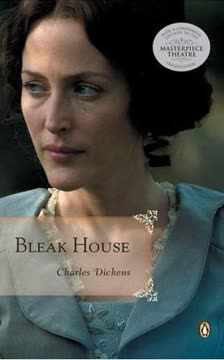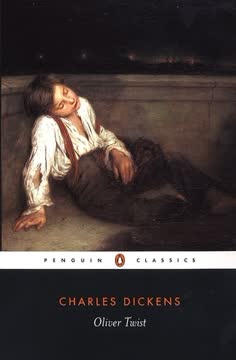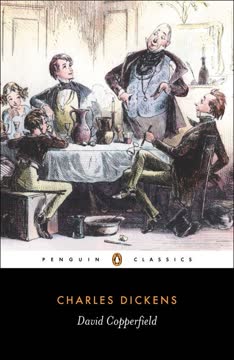Plot Summary
Chancery's Endless Labyrinth
The novel opens in the fog and mud of London, centering on the Court of Chancery and the infamous case of Jarndyce and Jarndyce—a lawsuit over a contested will that has dragged on for generations, consuming fortunes and lives. Dickens paints Chancery as a monstrous, self-perpetuating bureaucracy, a place where justice is lost in endless paperwork and legal wrangling. The case is so convoluted that no one understands it, but it has become a joke among lawyers and a curse for those entangled in it. The court's inefficiency and corruption are symbolized by the literal and metaphorical fog that envelops the city and the lives of the characters.
Orphans and New Beginnings
Esther Summerson, the novel's heroine, narrates her own story, beginning with her isolated and unloved childhood under the stern Miss Barbary. After her guardian's death, Esther is taken in by the kindly John Jarndyce, who also becomes guardian to two other young wards, Ada Clare and Richard Carstone. All three are connected to the Jarndyce and Jarndyce case and are summoned to Bleak House, Jarndyce's home. Their journey marks a new beginning, filled with hope and uncertainty, as they enter a world shaped by the lawsuit's shadow.
Bleak House Welcomes
Bleak House, despite its name, is a place of warmth and eccentricity under John Jarndyce's care. Esther, Ada, and Richard settle in, forming close bonds. They meet Harold Skimpole, a charming but irresponsible man, and Mr. Boythorn, Jarndyce's boisterous friend. The household is a haven from the outside world's chaos, but the ever-present lawsuit and the characters' uncertain futures loom over their happiness. Esther becomes the heart of the home, nurturing and organizing, while Richard and Ada's affection for each other grows.
Philanthropy and Neglect
Dickens satirizes misguided philanthropy through characters like Mrs. Jellyby, who is obsessed with distant causes while neglecting her own family, and Mrs. Pardiggle, who imposes her charitable zeal on the poor. The wards witness the squalor of London's underclass, including the street-sweeper Jo, and the suffering caused by society's indifference. The contrast between public charity and private neglect is stark, highlighting the era's social hypocrisies and the real needs that go unmet.
The Shadow of Jarndyce
Richard becomes increasingly obsessed with the Jarndyce and Jarndyce case, convinced it will make his fortune. Against Jarndyce's advice, he drifts from one profession to another, always distracted by the hope of a windfall. The case's uncertainty undermines his resolve and strains his relationship with Ada. Meanwhile, the sinister lawyer Tulkinghorn investigates Lady Dedlock's past, suspecting a connection to the mysterious law-writer Nemo. The lawsuit's shadow darkens all their lives, breeding secrecy, suspicion, and despair.
Secrets and Disguises
Lady Dedlock, the elegant but distant wife of Sir Leicester Dedlock, is haunted by a secret: before her marriage, she bore an illegitimate child. Tulkinghorn's relentless probing threatens to expose her, and she is drawn to the grave of Nemo, who is revealed to be her former lover and Esther's father. Esther gradually learns the truth about her parentage, and Lady Dedlock's guilt and fear intensify. Disguises, mistaken identities, and hidden motives abound, as characters struggle to protect themselves and those they love.
The Will and the Wards
A crucial will, long thought destroyed, is discovered by the rag-and-bottle shopkeeper Krook, who dies by spontaneous combustion. The will passes through several hands, including the unscrupulous Smallweed and the detective Bucket, before reaching Jarndyce's solicitor. Its contents promise to resolve the lawsuit and change the fates of Richard, Ada, and Esther. Meanwhile, Esther's illness leaves her scarred, but she finds strength in her relationships and her growing love for Dr. Woodcourt.
The Pursuit of Justice
Tulkinghorn is murdered, and suspicion falls on George Rouncewell, a former soldier. The detective Bucket unravels the mystery, ultimately revealing that Lady Dedlock's former maid, Hortense, is the killer. The investigation exposes the destructive power of secrets and the lengths to which people will go to protect themselves. Lady Dedlock, overwhelmed by guilt and pursued by Bucket, flees and dies in the snow, reconciled with Esther in her final moments. Justice is served, but at great personal cost.
Love Amidst Ruin
Esther and Dr. Woodcourt confess their love, but Esther is committed to her duty as Jarndyce's housekeeper and surrogate daughter. Jarndyce, recognizing their feelings, selflessly releases Esther from their engagement so she can marry Woodcourt. Ada and Richard marry, but Richard's obsession with the lawsuit leads to financial ruin and ill health. When the case is finally resolved, the entire estate has been consumed by legal costs, and Richard dies, leaving Ada a widow with a child.
The Fall of Lady Dedlock
Lady Dedlock's secret is exposed, and she is accused of murder. She flees Chesney Wold, pursued by Bucket and Esther, and is found dead at the gates of a pauper's cemetery. Sir Leicester, stricken by a stroke, forgives her and survives, but the Dedlock family is left diminished and haunted by the past. The scandal fades, but the consequences of pride, secrecy, and social rigidity linger.
The End of Jarndyce and Jarndyce
The long-awaited resolution of Jarndyce and Jarndyce brings only disappointment: the entire fortune is gone, devoured by legal fees. The case collapses, leaving the survivors to rebuild their lives without the hope of wealth. Dickens uses the case's absurdity to criticize the legal system and warn against the dangers of relying on uncertain inheritances. The characters who escape its grasp do so through love, work, and personal growth, not through the law.
New Lives, New Hopes
Esther and Woodcourt marry and create a happy home, with Jarndyce as their beloved friend and benefactor. Ada raises her child with their support, and the extended family finds peace and purpose in everyday life. George Rouncewell is reconciled with his family, and even the eccentric Skimpole is exposed and fades from their lives. The novel ends with a sense of renewal, as the characters find meaning in kindness, forgiveness, and honest work.
The Legacy of Bleak House
Esther reflects on her journey from unloved orphan to beloved wife, mother, and friend. The lessons of Bleak House endure: the importance of compassion, the dangers of pride and secrecy, and the need for reform in society's institutions. The story closes with Esther surrounded by her family, grateful for the love and happiness she has found, and hopeful for the future. The legacy of Bleak House is not wealth or status, but the enduring power of goodness and the quiet heroism of everyday life.
Characters
Esther Summerson
Esther is the novel's central character and partial narrator, raised in emotional isolation and shame by her godmother, Miss Barbary. She is kind, self-effacing, and nurturing, becoming the heart of Bleak House and a surrogate daughter to John Jarndyce. Esther's journey is one of self-discovery and healing, as she learns the truth about her parentage (the illegitimate daughter of Lady Dedlock and Captain Hawdon) and overcomes her sense of unworthiness. Her psychological strength lies in her empathy and resilience; she finds happiness in service to others and ultimately in her marriage to Dr. Woodcourt. Esther's development is marked by her growing self-acceptance and her ability to inspire love and loyalty in those around her.
John Jarndyce
The owner of Bleak House and guardian to Esther, Ada, and Richard, Jarndyce is a model of kindness and generosity. He is haunted by the Jarndyce and Jarndyce lawsuit, which destroyed his family, but he refuses to let it embitter him. Jarndyce is psychologically complex: he is both a father figure and a would-be lover to Esther, but ultimately releases her to marry Woodcourt, demonstrating selfless love. His role is that of a moral anchor, offering stability and compassion in a world of chaos. Jarndyce's development is subtle, as he learns to let go and trust in the happiness of others.
Lady Dedlock
Lady Dedlock is the beautiful, aristocratic wife of Sir Leicester Dedlock, living under the burden of a hidden past. Her illegitimate daughter, Esther, is the secret she must protect at all costs. Lady Dedlock is psychologically divided between her public persona and her private guilt; her pride and fear of scandal lead to her downfall. She is pursued by the relentless lawyer Tulkinghorn and ultimately flees, dying in despair. Lady Dedlock's development is a study in the destructive power of secrecy and the longing for forgiveness.
Richard Carstone
Richard is one of Jarndyce's wards, initially full of hope and good intentions. He is drawn into the Jarndyce and Jarndyce lawsuit, becoming obsessed with the promise of wealth and unable to commit to a profession. Richard's psychological weakness is his indecision and susceptibility to false hopes; he is gradually consumed by the case, leading to financial ruin and early death. His relationship with Ada is loving but ultimately tragic, as his obsession destroys their happiness.
Ada Clare
Ada is Jarndyce's other ward and Richard's cousin and wife. She is devoted to Richard, supporting him through his decline, and becomes a young widow and mother. Ada's psychological strength is her steadfastness and capacity for love, but she is also passive, unable to save Richard from himself. Her development is marked by suffering and endurance, finding solace in her child and the support of Esther and Jarndyce.
Harold Skimpole
Skimpole is a friend of Jarndyce's, presenting himself as an innocent, childlike man with no understanding of money or responsibility. In reality, he is manipulative and parasitic, exploiting the generosity of others and contributing to Richard's ruin. Skimpole's psychological immaturity masks a deep selfishness; he is a satirical portrait of artistic irresponsibility. His development is a gradual exposure and rejection by the other characters.
Mr. Tulkinghorn
Tulkinghorn is the Dedlocks' lawyer, a figure of implacable authority and secrecy. He is obsessed with uncovering Lady Dedlock's past and wields his knowledge as a weapon. Tulkinghorn's psychological makeup is defined by control, suspicion, and a lack of empathy; he is ultimately murdered by Hortense, Lady Dedlock's former maid. His role is that of a catalyst, driving the plot's central mystery and symbolizing the destructive power of the legal system.
Inspector Bucket
Bucket is the detective who investigates Tulkinghorn's murder and Lady Dedlock's disappearance. He is one of Dickens's first professional detectives, notable for his calm, methodical approach and his ability to read people. Bucket is psychologically astute, balancing firmness with empathy, and is instrumental in resolving the novel's mysteries. His development is that of a professional who brings order to chaos and justice to the story's tangled threads.
George Rouncewell
George is a former soldier and shooting-gallery owner, wrongly accused of Tulkinghorn's murder. He is estranged from his family but ultimately reconciled with them. George's psychological strength is his integrity and sense of duty; he is loyal to his friends and seeks to atone for past mistakes. His development is a journey from isolation to belonging, finding a place in the Rouncewell family and at Chesney Wold.
Jo
Jo is a homeless street-sweeper, representing the suffering of the poor and the failure of charity. He is a witness to key events and is pursued by the law, but ultimately dies of neglect and disease. Jo's psychological innocence and vulnerability make him a symbol of the novel's social critique. His development is a brief, tragic arc, highlighting the need for compassion and reform.
Plot Devices
Dual Narration
Dickens employs a dual narrative structure: Esther's first-person, emotionally intimate account alternates with a third-person, omniscient narration. This device allows for both psychological depth and social satire, creating suspense and offering multiple viewpoints. Esther's narration is marked by humility and self-doubt, while the third-person sections provide irony and critique.
The Chancery Suit
Jarndyce and Jarndyce is both a plot engine and a symbol of institutional failure. The case's endless delays and costs drive the characters' actions, create suspense, and serve as a metaphor for the paralysis and injustice of the legal system. The suit's resolution—when the entire estate is consumed by costs—delivers a powerful critique of bureaucracy and misplaced hope.
Secrets, Disguises, and Revelation
The novel is structured around secrets: Lady Dedlock's past, Esther's parentage, the lost will, and the murder mystery. Disguises and mistaken identities create suspense and drive the plot, while the gradual revelation of truths leads to both tragedy and redemption. Dickens uses foreshadowing, coincidence, and dramatic irony to heighten tension.
Social Satire and Symbolism
Dickens satirizes philanthropy, law, and class through exaggerated characters and symbolic settings (Bleak House, Chesney Wold, Tom-all-Alone's). Names often reflect character traits (Skimpole, Smallweed, Snagsby). The fog, mud, and decay of London symbolize moral and institutional corruption, while Bleak House represents hope and renewal.
Detective Fiction Elements
Inspector Bucket's methodical investigation introduces elements of detective fiction, including red herrings, clues, and the gradual unmasking of the murderer. This device adds suspense and structure to the sprawling narrative, culminating in the resolution of the central mystery.
Analysis
Bleak House is Dickens's most ambitious and complex novel, blending social criticism, psychological realism, and melodrama. At its core, the book is a scathing indictment of the British legal system, using the interminable Jarndyce and Jarndyce case as a metaphor for institutional failure and the corrosive effects of misplaced hope. Dickens exposes the hypocrisy of philanthropy, the dangers of secrecy and pride, and the suffering of the poor through vivid characters and interwoven plots. Yet the novel is also a celebration of resilience, compassion, and the quiet heroism of everyday life. Esther Summerson's journey from shame and isolation to love and self-acceptance embodies the novel's faith in personal growth and the redemptive power of kindness. The collapse of the lawsuit and the tragedies that befall Lady Dedlock and Richard Carstone serve as warnings against relying on uncertain fortunes and the destructive power of secrets. Ultimately, Bleak House affirms that true happiness and meaning are found not in wealth or status, but in honest work, forgiveness, and the enduring bonds of family and friendship. Dickens's legacy is a call for reform and a testament to the enduring strength of the human spirit.
Last updated:
Review Summary
Bleak House receives high praise for its complex plot, memorable characters, and social commentary on Victorian England's legal system. Readers appreciate Dickens' skillful storytelling, vivid descriptions, and ability to weave together multiple storylines. While some find the length challenging, many consider it Dickens' best work. The novel's dual narration and intricate plot keep readers engaged, though some struggle with Esther's character. Overall, reviewers commend the book's humorous and tragic elements, as well as its lasting relevance.
Similar Books
Download PDF
Download EPUB
.epub digital book format is ideal for reading ebooks on phones, tablets, and e-readers.















